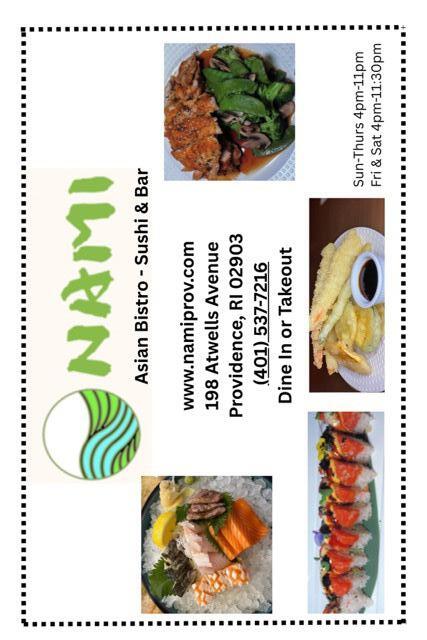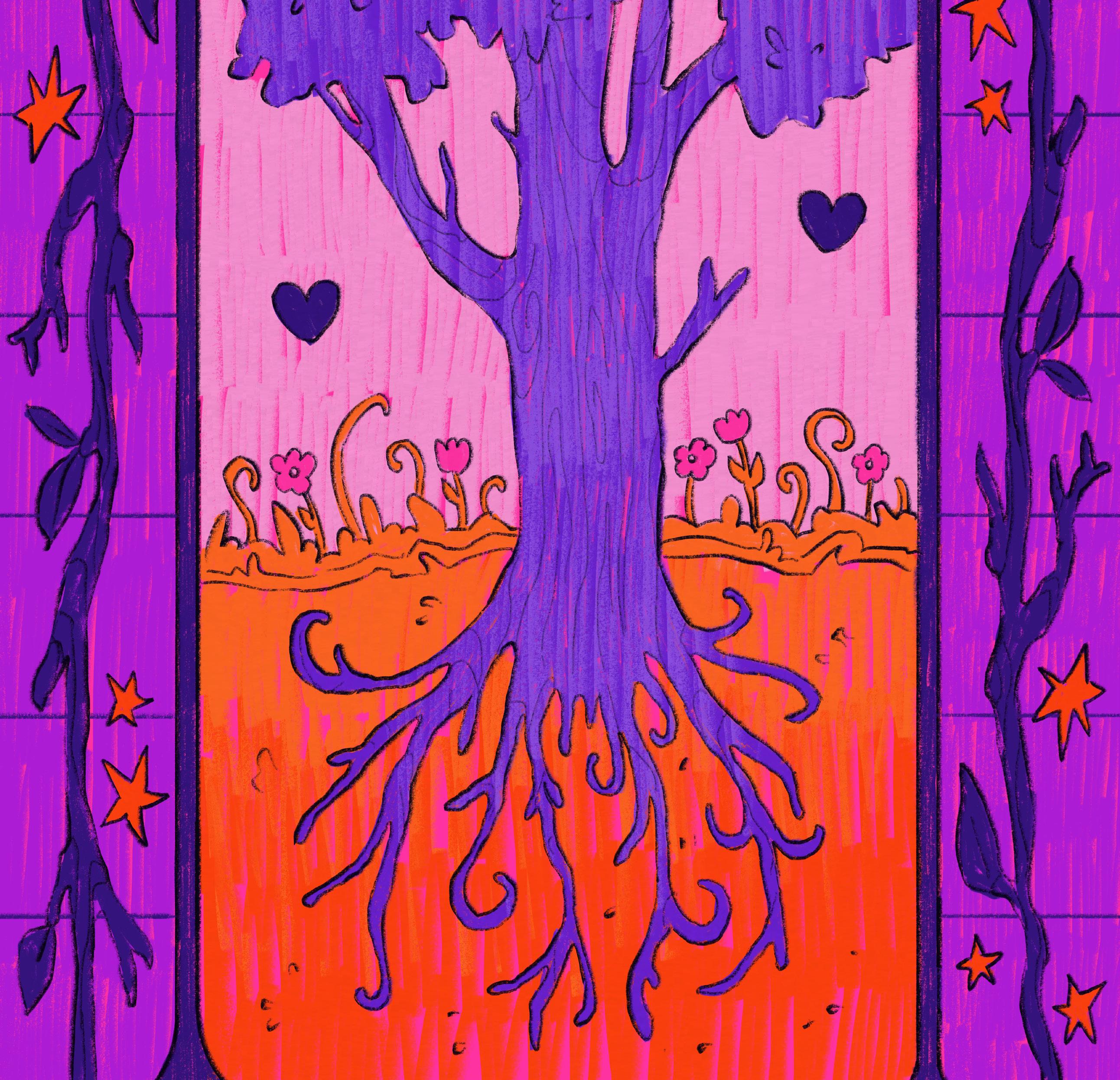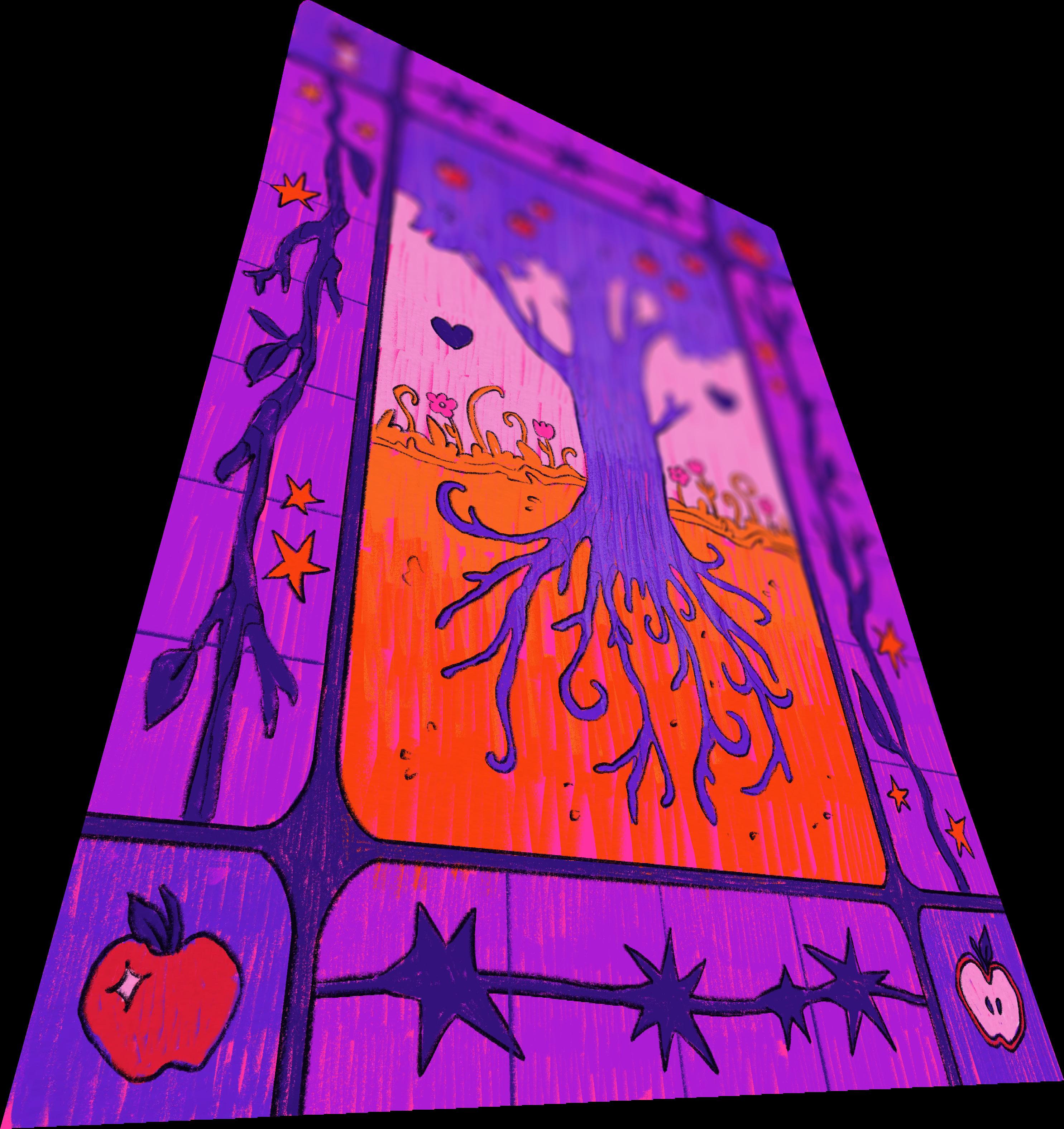










Dear Readers,
I admit that Spring Weekend is one of the events I'm most looking forward to every spring semester—even when it’s raining and we’re jumping in the muddied carcass of the Main Green, or when we haven’t really heard of the headliner, or when that guy has drunkenly fallen-then-photobombed your group’s selfie for the third time. Because it’s spring! And there’s live music! And what’s a better time than that? I’m maybe biased as a self-proclaimed concert junkie (a few days before our campus-wide concert I’m probably going to see Orla Gartland and then the day after I’ll be at Beach Bunny…), but I truly think live music brings community together—in swaying, singing, stumbling, spinning joy—like no other. Even if you don’t know the lyrics to a song, you can nod or clap or cheer with the crowd. Give yourself over to the thrall of the traveling melody. Listen to how sound distorts under the sheer sun, or rain glisten, in a way that the speakers from your computer can never capture.
For our special Spring Weekend issue, our writers are also reflecting on spring and music and sometimes both! In Narrative, Kathy recounts her first SW experience and how much the event has changed for her over the years, while Joe writes an ode to SW-alum Chance the Rapper as his first musical obsession. One of our A&C writers, Alyssa, replays her discovery of SW-alum, synth-pop duo MGMT and the stunning lyrics of “Kids” and “Time to Pretend.”
Our other A&C writer Sara tracks the
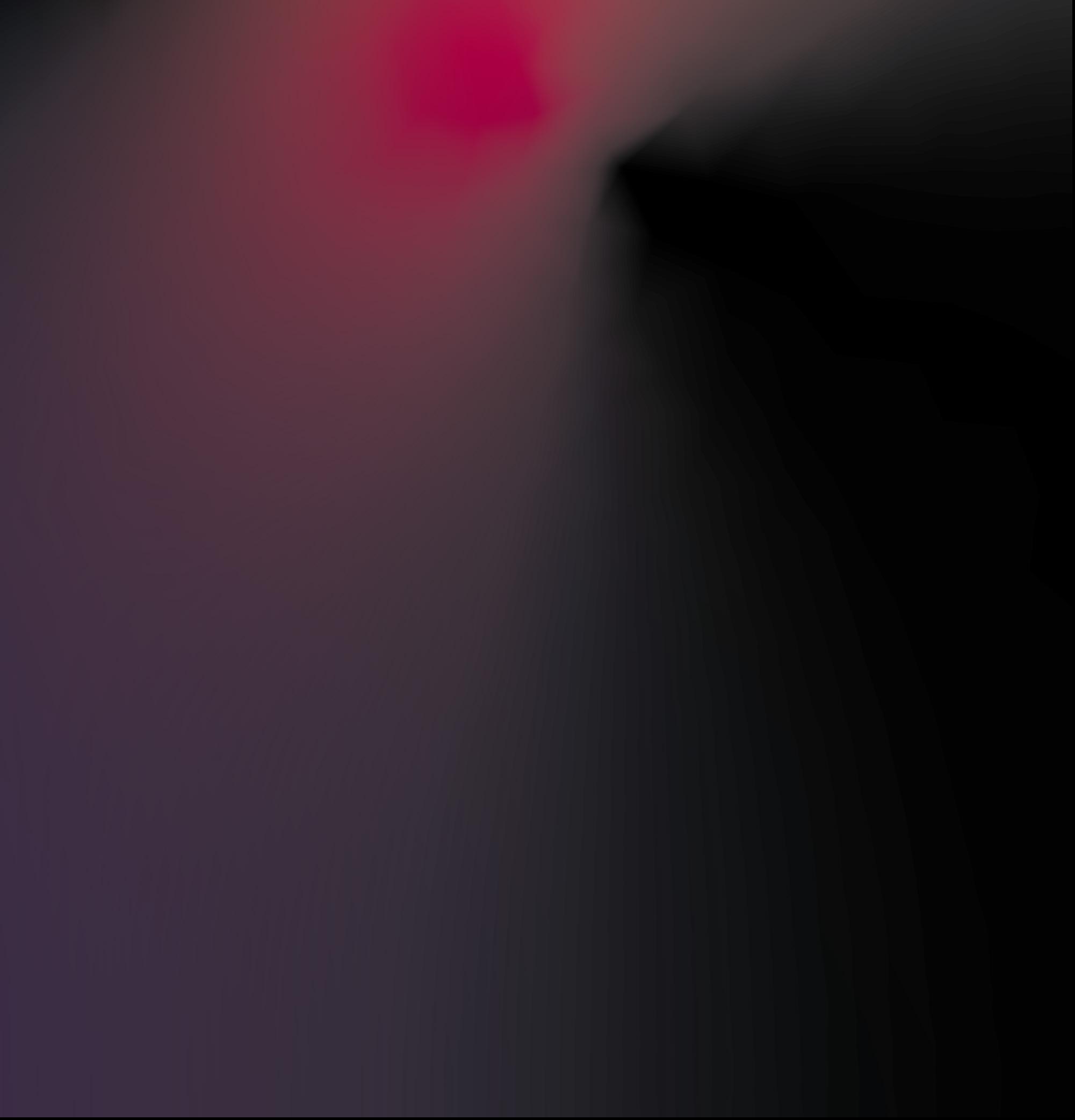
meteoric rise of SW-alum Doechii (who was here two years ago!) as she maintains her unique artistry in the face of industry pressure. In Lifestyle, Daniella explores her changing attitude toward the season of spring, while Katherine delves into all the other definitions— noun and verb—of “spring.” Our Feature writer Ellyse reminisces on her splintering, Victorian-style college house through the seasons. Last but not least, for post-pourri, Tarini reflects on the differences between spring here on College Hill and back home in Delhi.
Like many other Brown students I’m sure, SW’23 was one of my highlights of that spring semester. Ethel haloed in the moody rain, Remi’s surprise “Somebody That I Used to Know” cover, and the JID rerun of “Stick” will always be so special to me. It also means so much that post- can bring you, dear concert-goer, this SW special edition as we near the end of our spring semester mixtape. Sometime between studying this year’s artists' top songs, or the actual sets themselves, I hope you’ll tune in to this week’s issue of post-!
Definitely not mouthing the lyrics,
Emilie Guan Editor-in-Chief
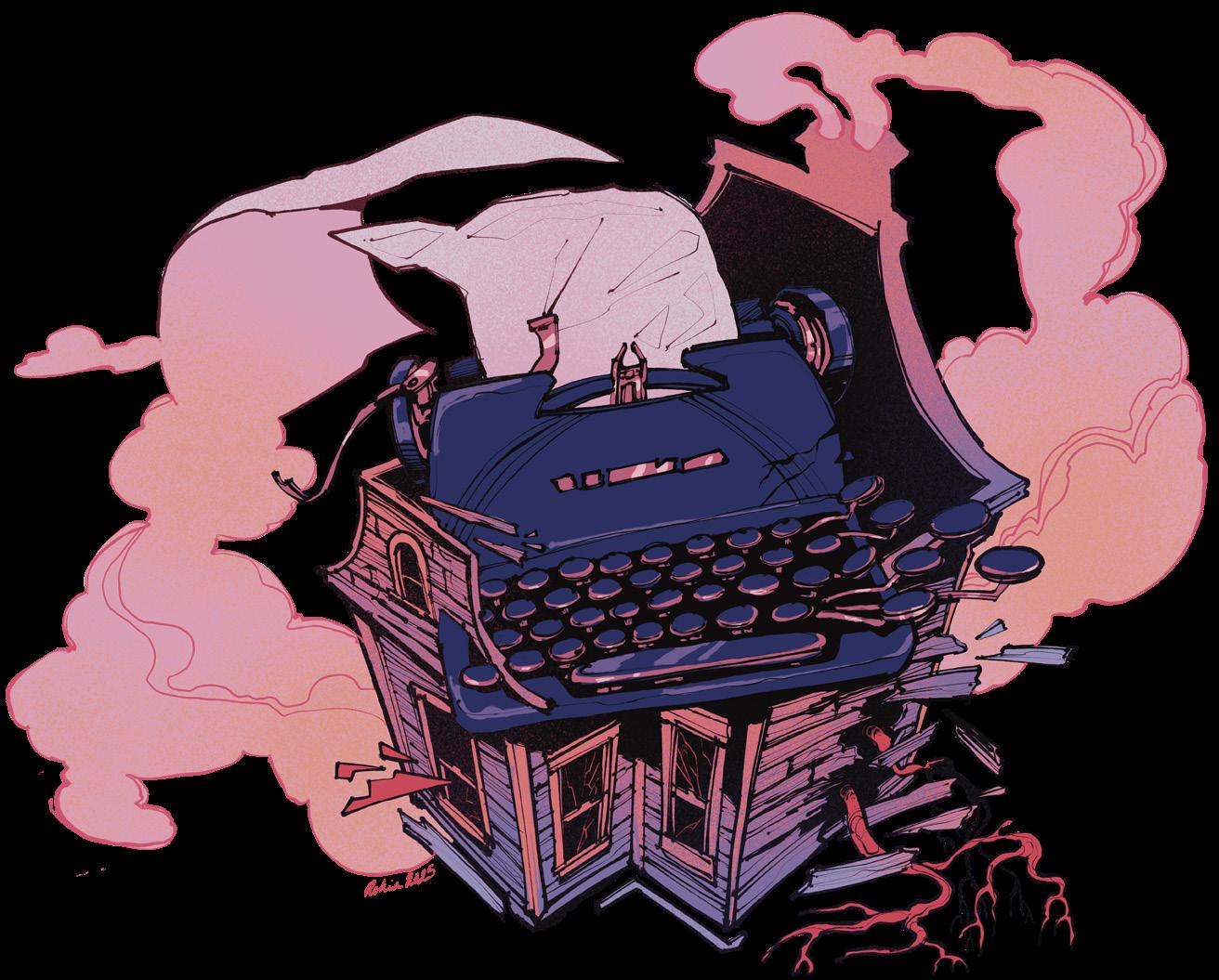


by Ellyse Givens
Illustrated by Rokia Whitehouse Instagram: @rwhite02
April is the cruellest month, breeding Lilacs out of the dead land, mixing Memory and desire, stirring Dull roots with spring rain.
- T.
S.
Eliot, The Waste Land, 1922
There’s a photo of our house from 1983, back when the exterior was painted a yellowed o -white—ivory, perhaps, in the right sun. The clapboard siding was the same then as it is now, the thin overlapping strips of wood that form our house’s ridged torso, a technique European colonizers called “dressy,” like a wooden skirt for a building, effective in protecting homes against New England winter winds while still letting warm air leak through in summer. Perhaps that was how our house braced itself for the “Megalopolitan Blizzard” of 1983, when 11.2 inches of snow fell in just one February day, and then was able to open up and breathe again on the 11th of September, when temperatures rose to their hottest levels of that year.
Ours is the 1898 J. Nickerson House of Providence’s East Side, a Victorian-style estate featuring large Greco-Roman-inspired columns supporting the second-floor balcony and porch overlay. Dentil work runs along the roofline, a type of ornamentation that uses a series of small blocks in a row. Below, we have bay windows on the first and second floors that jut out in assured trapezoidal ways, creating an asymmetrical body that bulges in some places and not others. Today, it’s dressed in blue—a periwinkle flushed with grey—except where the clapboards’ paint chips, and lucky parts of the old ivory emerge to feel Rhode Island rain again.
In the photo, there are still two front doors. Now, inside the left-most one is the red-carpet-lined staircase to the second and third floors, the very peeling wallpaper a toile pattern—a narrative design made up of repeated scenes centering around an event or theme. Ours must be pastoral: In one recurring motif, you can see a woman lifting a lamb, showing it to a winged deity. Everything is a dusty blue, and if you look close enough, you can see two di erent shades of it—a lighter one like pale cerulean, and tracings of something darker layered on top, the two creating shadow, life. Pu y human cheeks and fleecy sheep bellies, all the way up to the third floor.
I texted the 1983 picture to the group chat with all of my housemates. A, who lives on the first floor, texted back:
The stairs have not been replaced which makes sense bc every time I step on one I
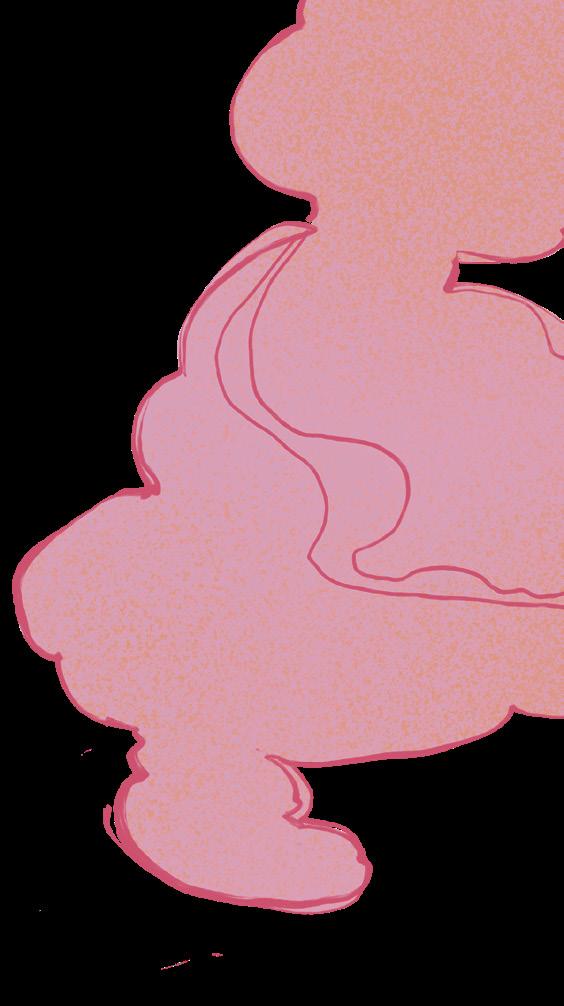
think abt how I could step through and die.
Yeah, I think that’s it: Our house is breaking. The landlord has banned us from the second-floor balcony, locking the door and holding on to the key. I wonder what finally convinced him it was no longer safe to step on—if a person fell through, their body crumpled up on the front porch like one of my Amazon packages. I imagine wood rupturing under me, plunging fast with severed bits, each time I stand on the other balcony, the one overlooking the backyard. And on the inside of the house, each of the red steps groans underfoot, angry like something ought to be, I reckon, when it’s been stepped on for 127 years. At the top of these stairs one afternoon, I opened the third-floor door and felt the handle come loose, the brass knob suddenly in my palm, surrendering itself.
After World War I, younger generations began to view the Victorian Era as overly extravagant and materialistic—so much so that, by the 1930s, the word “Victorian” became a disparaging term. Victorian-style houses, with their heavy facades and excessive furnishings, came to represent the corruption of a bygone age: Architect Talbot Hamlin went so far as labelling them “wooden monstrosities.” As these homes fell out of favor, gradually abandoned, artists employed them as metaphors for fear and terror. Films like Psycho and books like The Haunting of Hill House solidified Victorian houses as menacing spaces, where ostentatious histories festered—thick strips of black mold between the floorboards of my bedroom.
Perhaps Hamlin would laugh at me, sitting in the Rhode Island Hospital emergency room one Sunday in February. M was picking something up in her second-story bedroom when a piece of the hardwood floor became lodged in her left ring fingernail. She tried to pull the splinter out, only for the top part of it to break o , leaving her with a tiny piece of dark wood stuck in the skin underneath the nail. I watched her put her head into the right palm and breathe, visibly in pain, reminding me of the November night when Z’s window shattered, cutting the top of her hand open— the void in her window, letting all the cold in. Monsters who bite back.
Someone asked me what J. Nickerson would think of all this, his ghost in the chipping periwinkle paint and the stairs
that haven’t been replaced, the broken glass and the splinters pushed in skin, the Smith Corona mechanical typewriter that’s still on the third floor (someone wrote I LOVE CLUB SWIM with it.) I tried to learn more about him, visiting Providence City Hall’s Archives and hoping for a grand history to write about. A nice man named Antonio found the original permit for me, which declared Nickerson’s intention to build the house in 1896, but couldn’t find any other related materials. The 1983 photo was the only useful thing I found available online, except, I guess, for Nickerson’s ‘Return of a Death’ form on FindAGrave.com. A retired police o cer, he died on June 17, 1923, in our house, signed away by his daughter, Mrs. William Waters.
Around the time I visited the Archives, I had to start thinking about a topic for the capstone research project for my economics concentration. Over Zoom in my third-floor bedroom, which is painted a subtle green, I said something to my economics professor about wanting to make research meaningful in a time like this. Whatever that means.
“I think all we can do is—” she sighed. “I think all we can do is learn facts about the world.”
I became excited to conduct economic research on maternal health, to learn facts about the world, if you will. But I had di culty accessing the dataset my professor recommended, speaking on the phone with various CDC customer service agents to get around what I assumed to be a website bug. I found out later, sitting on the couch in the third-floor common room around midnight, that the presidential administration had locked researchers out of this survey data, and I suddenly felt terrible for bothering sta ers who were likely very concerned for their jobs. Like in the Archives, I sought histories I thought to be alive and waiting for me. Histories that do not exist.
On many Sunday evenings, I talk to my grandfather. After discussing his puppy and writing, he usually mentions something about the news. He apologizes on behalf of his “generation;” I laugh and tell him it’s not his fault. On the 9th of March, several hours after my grandfather’s Sunday call, I sat cross-legged in thin pajama pants on the hardwood by the dining table and watched my phone change from 1:59 AM to 3:00 AM. I had never been awake to watch an hour be cut out, a wedge from a wall clock, to spring forward. We put our phones back down and continued our round of Mario Kart.
With climate change, spring is coming earlier. According to Temple University’s Jocelyn Behm, in a natural, pre-climate change ecosystem, “everything had evolved so that the timing all matche[d] up.” The birds migrated back around the same time the insects, which the birds feed on, emerged from their winter dormant states. “There is all this synchronous matching, and that’s what is starting to break down because all the species are responding in their own unique ways.”
From my desk on the third floor, I look into the branches of the American elm out front that press up against the window with
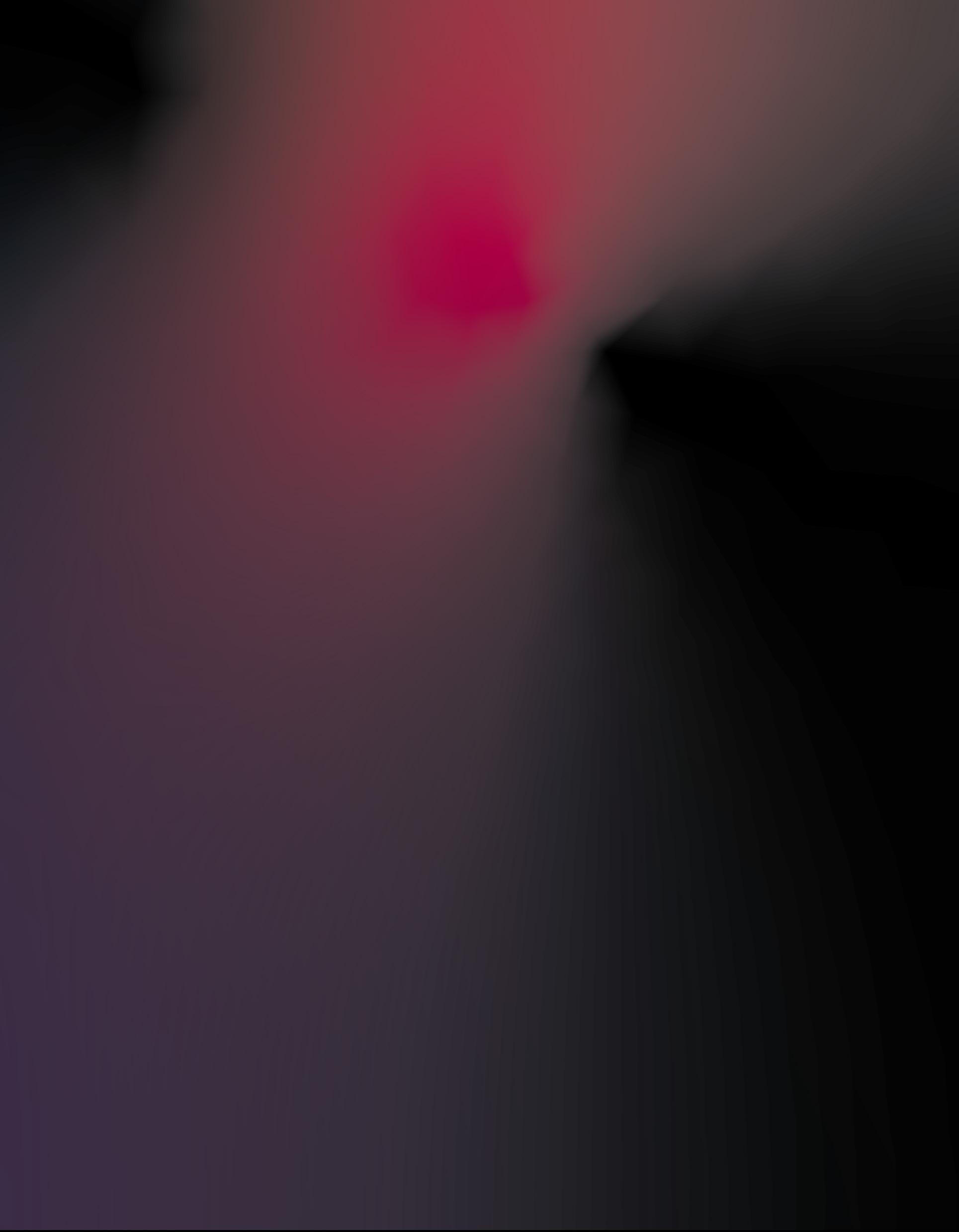

into the tree cavities. Below, the roots bust through the cement like unruly wooden tentacles, and if you aren't careful, you'll trip on the rolling hills of our sidewalk. Perhaps, for the squirrels, it also feels like their home is angry at them for living in it. Perhaps that's why they've begun relocating to our outdoor trash cans.
I found out recently that the recurring motif on our toile wallpaper, of the woman holding up the lamb, actually depicts an o ering—an animal sacrifice.
Our house has nothing to do with the state of the greater planet, government, economy. What feels the same, though, is the guilty joy we find in things that are falling apart. The water balloons thrown from our back balcony, breaking on our shoes in the backyard, laughing, wet and drunkenly. The second floor’s blue couch, how it traveled to us in K’s partially-open trunk, others sitting back there to hold it in. The evening after the Valentine’s Day party, when we sucked helium out of the red, heart-shaped balloons, or perhaps the quieter nights in our too-small kitchen, S cutting avocado with her favorite scalloped knife, the one with the pink handle. The way I am enjoying my classes more than I ever have before. My walks to campus among the da odils that look like bright yellow flames.
The other day, a friend and I did a virtual workout class in the third-floor common room. At first, I thought it was a cardio class, the jumping jacks and high knees. But it wasn’t that. The woman encouraged us to let out noise, to sigh, to roar, which made the burpees a lot easier, and made everything feel like some kind of release. Holding a crunch position, she said, “Keep feeling for your center—which is all just love. If you are feeling tension or anger, you are not there yet.” It made me think of the inner core of the Earth, under all those layers of molten metal, which a ects the length of our days.
My friend on a yoga mat and me on a bath towel, we danced, jumped, laughed atop my creaking living room floors, because maybe that is all we can do. My face pressed into the ground in Balasana child’s pose, I began to cry quietly for the hardwood that holds us.

by Katheryne Gonzalez
Illustrated by Angelina So
Instagram: @ang_i_i_
I purchased my first-ever Spring Weekend ticket while on the treadmill. I was #1998 in the virtual queue and the little figure on the screen walked atop the progress bar from left to right, imitating my leisurely pace, dragging itself to the finish line. Every day felt like that at the time. Between subpar performance on exams, homesickness that created an ever-turning pit in my stomach, and a body I no longer recognized as my own, I needed something to look forward to. So, I held on tight to the relief I felt the moment I got those tickets, for they were a promise of an unforgettable celebration and a Brown tradition I simply could not miss. But the anxiety I actually felt could not be disguised as excitement no matter how hard I tried. Despite spending days curating hypothetical outfits and listening to the artists that would grace the Main Green stage, I couldn’t convince myself that my underlying dread was eagerness.
All the signs were there. And yet, when that Saturday afternoon finally came, I was genuinely shocked that I could not muster up the motivation to go. I went through the motions of it all: I got dressed, undressed, dressed again, did my makeup, took it o , reapplied it, practiced my smile in the mirror once or twice, maybe a third time. But my head and my heart were out of sync, and my limbs sti ened at the thought of making the walk to the Main Green. I sat there, frustrated at my paralysis, embarrassed at my inability to cut my spiraling thoughts o at their source. I felt obligated to do


some social damage control—my friends were expecting me, after all. So, I texted the group chat that I’d meet up with them there, turned o my location, and rehearsed my excuse for being late: Oh I just got a migraine! It’s no biggie, really. It must’ve taken an hour for me to regain my composure but I managed to make that trek, getting in line right as the remaining tinges of pink and orange in the sky gave way to darkness.
While my friends enjoyed the Undertow Brass Band and Amaarae, I waited patiently on the corner of George St and Thayer St to enter the venue. My then-acquaintance, now-boyfriend—bless his heart—guided me through the massive crowd to where my friends were standing. I sang along to Flo Milli and Smino, just as I had practiced, and for two hours it felt like my night was going according to plan. Like my inertia wasn’t overcome by the incessant shoving of the sea of bodies that enveloped me. Like my jaw wasn’t tense and my appetite wasn’t nonexistent and being alone in the crowd with my thoughts wasn’t agonizing. Like I was a normal 19-year-old doing normal college things with my well-adjusted college friends. Like everything was going to get better if I just did this one thing.
I did not go to the performances on Sunday. Well, I did not stay for them. Before the show, I swapped out the infuriating song and dance of self-deprecation and loathing for a renewed sense of indi erence. I rid my mind of any expectations, accepting whatever plans the universe, the Brown Concert Agency, and my psyche had in store. As I watched the beginning of Ari Lennox’s set I, like a self-fulfilling prophecy, developed a migraine. I couldn’t help but laugh as I walked back to my dorm. Instead of fixating on my tendency to self-sabotage, I lay on my bed with a sense of contentment, the comforter shielding my eyes from the overhead lighting. Looking back on it now, relinquishing control—of my emotions, decisions, and expectations—felt radical.
This is not to say that I don’t enjoy Spring Weekend—day two of SW 2023 remains one of the days I’ll treasure most throughout my time at Brown. It just took missing out on most of it for me to realize that I had a penchant for setting myself up for disappointment. Holding myself to unrealistic and self-imposed expectations is what caused the spring of my freshman year to be such a dark time in my mental health trajectory. Almost from thin air, I fabricated expectations of how I was meant to act, think, look, and feel. I attached so much weight to each memory—treating every fleeting moment like it was meant to be perfect and cherished for years to come—that it’s no wonder I was sinking beneath it all.
As my last Spring Weekend approaches, I’m glad I allowed myself to spiral on that gloomy April weekend three years ago. While it may not be my fondest memory, it laid the foundation for many wonderful memories in the years that followed. Most of all, I’m incredibly grateful to experience every passing day, inching closer and closer—akin to the little guy atop the progress bar in the virtual queue—towards a better understanding of who I am, on a path devoid of expectations.
by Joe Maffa Illustrated by Junyue Ma
A review of 2014’s Spring Weekend from the Brown Daily Herald describes the concerts as “primarily successful.” 11 years later, and I can only chuckle at this subdued summary of a series headlined by one of the most prolific DJs ever and arguably the greatest artist of all time whose sound pioneered the sung hip-hop that dominates modern charts today. Still, the showstopper for me was not a headliner, but instead the middle act of a “chaotic and rave-like” Friday evening.
Chance the Rapper is a rapper from Chatham, Chicago and my first musical addiction.
* My musical DNA starts in the car. On a road trip to Connecticut, I registered the first song in my collection, Five for Fighting’s “Superman (It’s Not Easy).” This memory exists in images, not scenes: a four piece Chicken Selects from McDonald’s and a mini jug of 1% milk with Ronald on a sur oard, a life sized replica of a tyrannosaurus fossil made entirely out of Legos, the plastic border of the playground that I interpreted to be a balance beam, the pillowy crash of my knee on the pavement, the sting of rubbing alcohol on a fresh wound. The soundtrack to this slideshow is my dad replaying the same song again and again until my mom tires of it and puts on her own, Boston’s “Peace of Mind”.
I’m still on the road, but I’m now ten years old which makes my brother thirteen. My dad has already dropped him o at middle school, and we’re heading down the main road to elementary school. He’s sing ing along to “A Horse with No Name” by America. I remember having nightmares about this song, about a man walking into the desert with the titular horse, and the decay of nature around him. There’s some conflating of the Horse with No Name and the Headless Horseman in my head, so I ask him to turn it o , and he plays some of Harry Chapin’s 1976 album Greatest Stories Live Those stories played me o to fourth grade, inspiring dreams of future love, loss, and all of the in between as I pretended to learn about simple machines.
remains humble, reserved, and vulnerable. It reminded me of the Americana that I was raised on from the CD console of our family CR-V—a story and a dream for all that he would become.
* When I listened to Chance the Rapper’s verse for the first time, I saw myself at college in just five years time, dissecting the brilliance of double entendres, going bar-for-bar with my friends, geeking out over our favorite songs and our favorite verses from those songs and our favorite lines from those verses. In my head, that university was filled with students who shared my obsession, who knew his features as well as his main discography.
To my friends, it’s no secret that my favorite word in the English language is serendipity—the chance that the stars would have aligned in just the right way, the possibility that the college I envisioned in my head would have already hosted Chance years before my dream even existed. There’s no charm like a good coincidence.
By the time that verse was released, he would have already delivered his set at Brown. He may have gotten a wrap at East Side Pockets, or walked through Faunce, or even played tourist with one of the many bear statues on campus. I wonder what he thought of this place I’ve been lucky enough to call my home for the past four years.
I wonder if he noticed the way that the magnolias on the Main Green started to bloom and released their sweet fragrance to the world. I wonder if he picked up on the artificially transplanted lawn that comes and goes and brings it with it swaths of students to sit and share each other’s company. I wonder if he knew about the way the sun fills the Petteruti Lounge and makes it unbearable to do anything but just take a secret little nap in between classes. There are so many charms of this wonderful little campus that have made me bask in the fortune of it all during my time here.
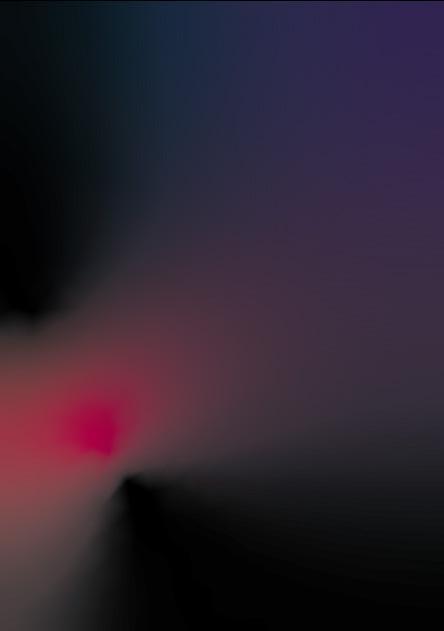
I’ve been thinking a lot about these little wonders recently and the chance that anyone has felt these exact same feelings in these exact same spaces as I have. Are there people on this campus that I have physically just never crossed paths with—never been within distance to brush coats or hold a door? Do they walk the same routes that I do just in parallel, like a dog chasing its own tail, never to make contact?
These feelings resurface most often on my weekly walk through Patriot’s Court where I see my old Harkness window. The current tenants keep the shades closed for the most part, but I can see a plant peeking out of the bottom of one, a monstera much more ambitious than the sorry excuse for a succulent that I tried to foster in that room. I wonder who lives there, if they noticed the torn paint that behind our old posters, and used the light that I couldn’t figure out how to remove, or found the signatures that my roommate and I left when we moved out.
There’s been a photo that has been popping up on my timeline recently. It’s an artistic interpretation of a universe, though I’m not confident I could call it ours. The caption reads, “All this and we still met.” It’s a wonder that I’ve met so many people who spin me around and fill my cup over and over and have altered my DNA in everlasting ways, but in the vastness of it all, it’s hard not to think about all of the acquaintances I never made, and the connections that have just blown by.
I can’t stop myself from getting mushy at the end of it all, staring down the barrel of the last iteration of my favorite Brown tradition. I’m looking forward to this year’s lineup, and all of the memories that will mutate my musical DNA in ways I’ll never be able to shake. But most of all, I’m looking forward to sharing that time with the people who have crossed my path during the past four years.
And then I’m in the car again, headphones in, when I first hear “Ultralight Beam.” In the opener to the artist formerly known as Kanye West’s The Life of Pablo, Chance the Rapper takes the stage for himself, delivering a verse that continues to hold as much significance in his career as it does in my mind. It was prophetic, predicting his Grammy victory and the success of his third mixtape months before its release—delivered with the kind of confidence and assurance of a true veteran. Despite the bravado, his verse
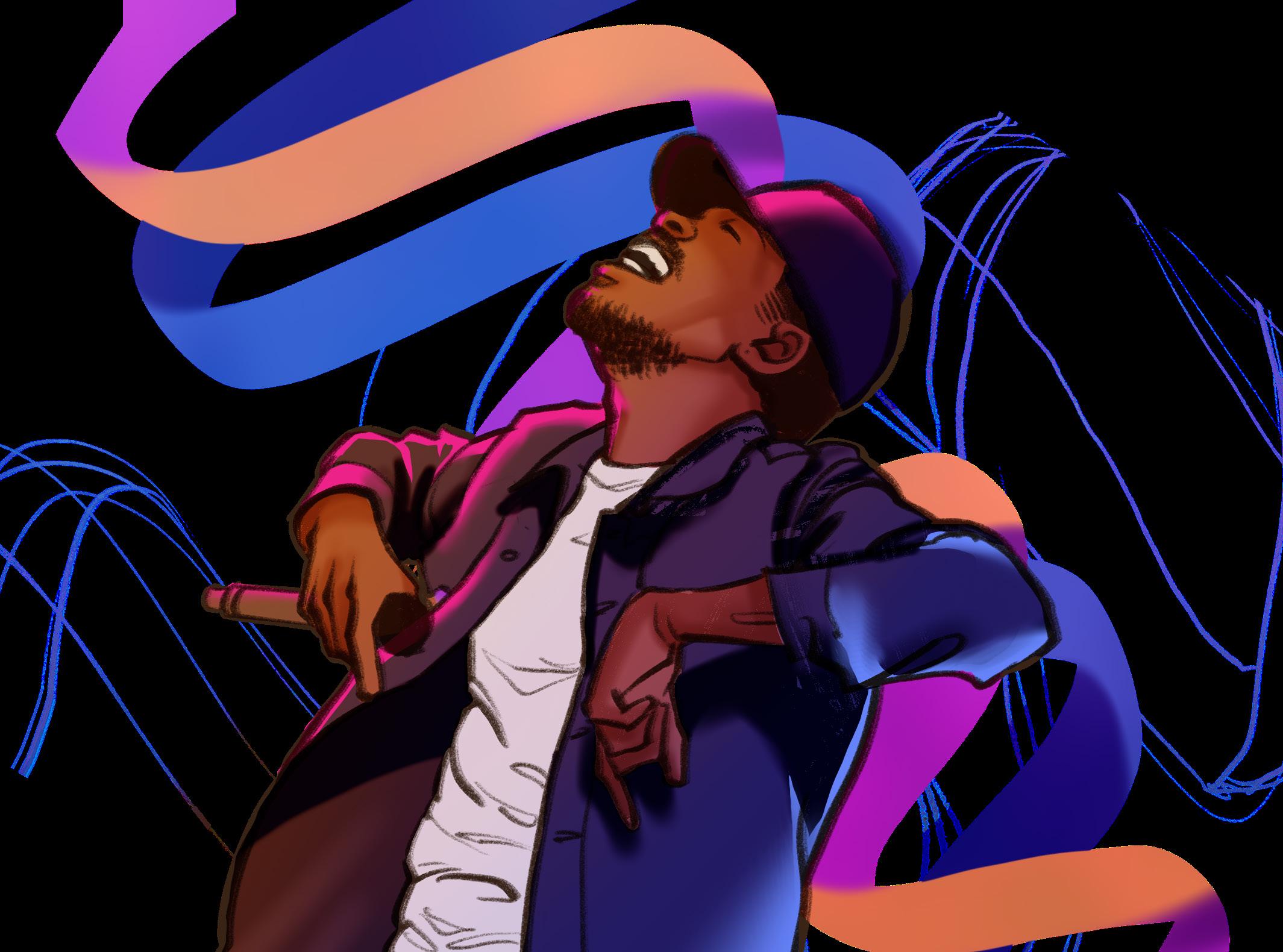

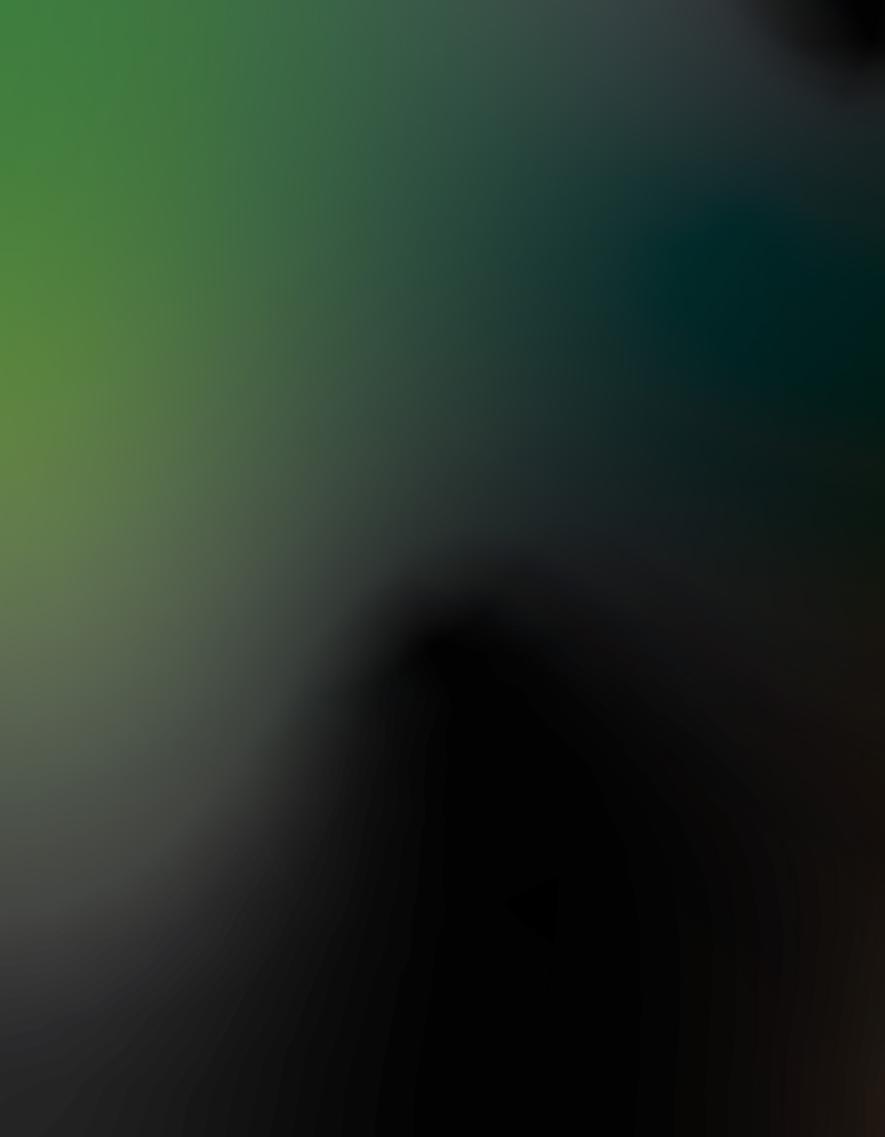
worms playgrounds, animals, on MGMT, missing a moment before it's over, and finding moments worth missing
by Alyssa Sherry Illustrated by Ina Ma
It’s the middle of August, and we only just got here. Right now, our whole group is gathered in the basement of a bar that’s too bright on a street that we’ve never seen in the daylight. I’m holding a beer, although I don’t drink beer, and we’re all a little drunk on Moscow Mules that cost us 95 kroner apiece since we don’t know yet that 95 kroner is way too much to pay for a drink. The beer is sweating in my hands, and my hands are sweating. She’s got a dart pinched between her fingers, and she’s squinting at the dartboard across the room. We’re all egging her on, and we’re getting looks from the 50-somethings sitting around us, because what are a bunch of Americans doing here on a Sunday night? And then she lets the dart go, and it narrowly misses the bullseye, and we’re all cheering, and she’s beaming a smile I’ll soon become familiar with even though right now I barely know her name.
And as I’m standing here, looking at everyone, I hear a familiar opening, a murmur of chirps and buzzes, spill out from the speakers in the corner of the room. Then, a tone like a heartbeat, then synths, then drums, then “I’m feelin’ rough, I’m feelin’ raw, I’m in the prime of my life!” “Time to Pretend” by MGMT. And as the song starts to reverberate through me, like it always does, I feel open and strange, like anything could happen, here on the other side of the ocean. So I want to cling to this moment, sink my fingernails into it, press rewind, and start it all over again. I can imagine what it’ll be like to remember this, “Time to Pretend” overlaid upon hazy memories of a bar that I never went back to and people I never spoke to again, even as I am living it.
***
I first discovered the synth-pop duo MGMT—specifically, their song “Kids”—when
I was a freshman in high school. “Kids,” which begins with a countdown shouted through the din of screaming children before the thumping synth kicks in, is MGMT’s nostalgic reflection on the innocence and glory of youth as they prepare for college graduation and face a world filled with exploitation and degradation. Similarly, “Time to Pretend” is the pair’s mediation on how stardom might transform their lives and take them away from all of the simple joys and comforts of youth, instead presenting them with the gritty loss of innocence that comes with maturity and fame. Both of these songs come from their debut studio album, Oracular Spectacular, which was released in 2007 and performed by MGMT at Brown’s Spring Weekend in 2010.
When I first heard “Kids,” it leveled me. Although I was only 14, I was immediately struck with the sickening sense of loss that I felt when thinking about the past, an all-too-familiar longing for the simple moments that used to feel big. The opening lines—“You were a child, crawling on your knees toward it”—filled me with something like grief. I wanted to be a kid again, crawling toward everything, nothing behind me to look back at.
*
Often, I feel as though I can’t be trusted with memory. There are trash bags and cabinets in my childhood bedroom stu ed with shrapnel from people I don’t know anymore: a strip of shiny magenta tinsel, photo booth reels from sweet 16 parties, a pair of sparkly green earrings thrifted in Twentynine Palms. There are boxes in my closet with lids that won’t close, bursting with birthday cards from old friends that I haven’t talked to since I was 14. My walls are covered with pieces of the past: my ticket to see Love, Simon in eighth grade, my ticket from the first time I visited my best friend in San Diego, my ticket for a boygenius merch ra e at a listening party for the record (which I didn’t win). Countless scraps of memory for me to pick up and hold and ache over and long for and want back, even when the reality of it all was much less rosy than the feeling of missing it. For me, nostalgia has always felt a lot like self-sabotage: I crave the nauseous pain of it.
* It’s the middle of May, and we’ve been here forever. After two months of lockdown, New Jersey is finally thawing, and now the four of us sit six feet apart, cross-legged in the middle of the darkening street. The humidity is so thick that the pavement smells sweet. We’re talking about the usual things: the boys we’re talking to, our summer jobs, what we’ll
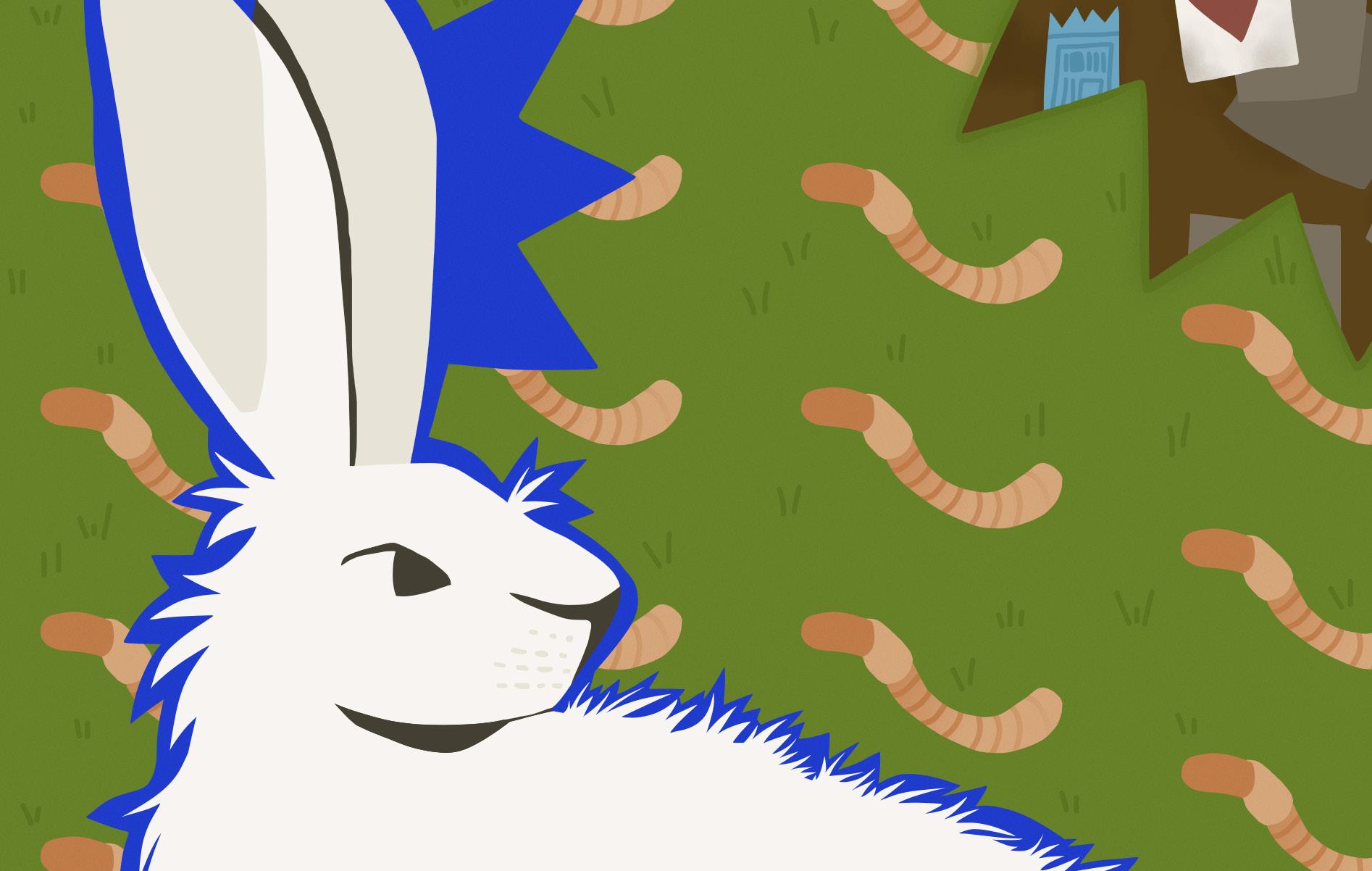
do when we get our licenses, what we’ll do once we graduate. The same things everyone talks about when you’re 16ish. The street is warm and rough under my palms. Mady suggests we go for a walk.
So we’re walking, chatting, skipping. Then, almost out of nowhere, a hot gust of wind breathes through the trees, and huge droplets of rain splatter against our bare arms and pool into the soles of our sneakers. And we take o running. And as I’m running against the torrent of rain next to the three of them, I’m swiping through the droplets beading across the screen of my phone, and now I’ve got “Time to Pretend” crackling through the waterlogged speakers. And we’re running, and my shoes slip against the rain-slick road, and I feel real, and awake, rough and raw. I feel like I am spilling over. I can imagine what it’ll be like to remember it, “Time to Pretend” overlaid upon hazy memories of the street Mady doesn’t live on anymore and a group of friends that splintered, even as I am living it.
*
Often, I feel as though I can’t be trusted with memory. I reread old journal entries till I know them by heart, and my voicemail is perpetually full of messages I can’t bear to delete. And each time I go back over it all, revisit each scrap of memory until I feel an ephemeral gasp of the specific way that October or that August felt, almost grasping it but never quite, I hate how much it hurts to remember even the things that were so good.
When I listen to “Kids” and “Time to Pretend,” I wonder how MGMT could so perfectly capture the way memory feels: persistent and beating, vast and important. In “Time to Pretend,” they sing, “I’ll miss the playgrounds and the animals and diggin’ up worms / I’ll miss the comfort of my mother and the weight of the world / I’ll miss my sister, miss my father, miss my dog and my home / Yeah, I’ll miss the boredom and the freedom and the time spent alone.” To MGMT, memory and loss are innately intertwined, viscous and intangible like syrup slipping through the prongs of a fork.
Likewise, in “Kids,” we’re told, “The memories fade, like lookin’ through a fogged mirror / Decisions to decisions are made and not bought / But I thought this wouldn’t hurt a lot, I guess not.”
*
But then I think back on all of the moments that MGMT has soundtracked my life over the past seven years. Some of them are clear and concrete, like that first night out in Copenhagen, or the night on Mady’s street in the rain. Others are much more nebulous, vague, and fleeting: sitting on a picnic bench and turning my face to the sun. Watching the glittering skyline of the city come into view after takeo . Walking through campus as the magnolias started to bloom. And it’s true—I miss all of these moments and feelings and experiences, the same way that MGMT misses playgrounds, animals, and digging up worms. I miss the way their songs feel even when I’m still listening to them. But it’s a di erent kind of missing—it’s a good ache. It makes me remember to take the time to seek out everything worth missing. To be present in the moments that I’ll look back on without anticipating how much it’ll hurt when they’re over. To feel the sun on my face. Maybe sit on the swings. Maybe keep an eye out for earthworms.

“Oh
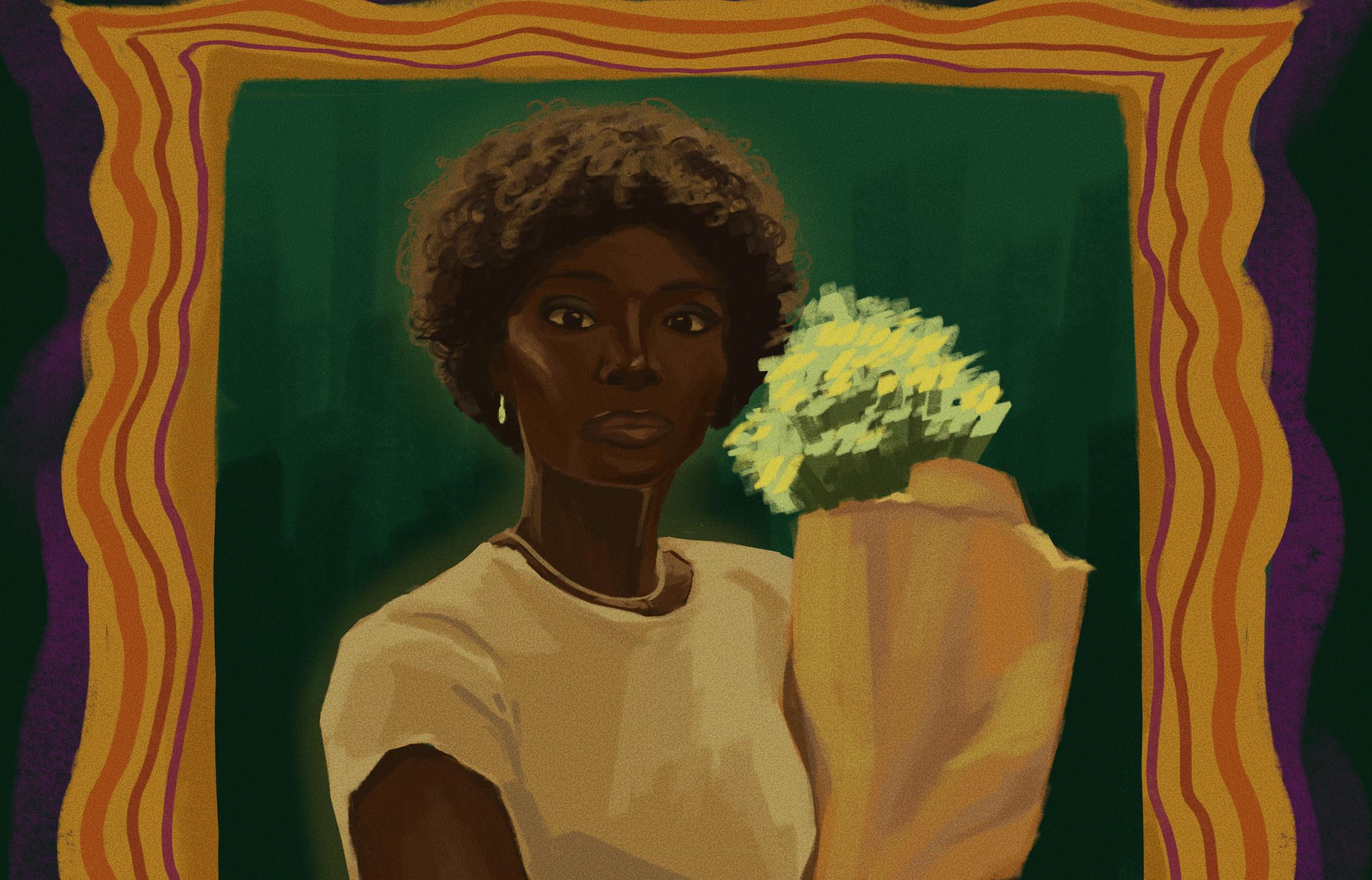
By Sara Harley Illustrated by Emilie Guan
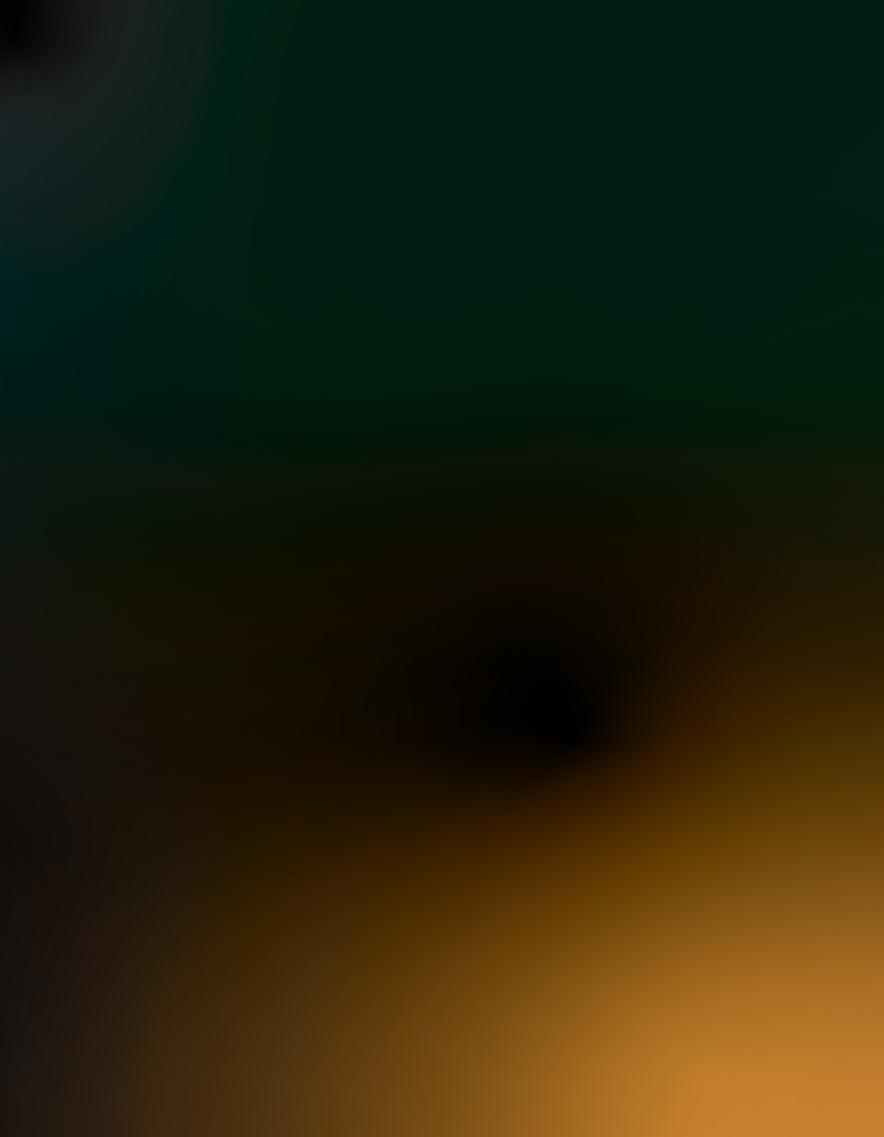
From hip-hop to TikTok, Doechii’s meteoric rise to stardom shows that artists can express their individuality and still gain popularity among diverse audiences.
Jaylah Ji'mya Hickmon, known by her stage name Doechii, began creating music on SoundCloud while in high school in Tampa, Florida. In an interview with The Hollywood Reporter, Doechii said the pseudonym gave her the confidence to overcome mental health di culties associated with being bullied. She remembers: “This wash of peace came over me, and I received ‘I am Doechii.’ But it was more like this feeling of—I made a choice, a decision. I am the most important character in this movie. This is my motherfucking movie.”
Doechii’s breakout single “Yucky Blucky Fruitcake” went viral on TikTok in 2020 for its tight lyrics and honest reflections about being a Black bisexual woman. It’s named after a children’s book in the Junie B. Jones series that emphasizes expressing one’s uniqueness in spite of bullies. According to Rolling Stone, before her music was removed from TikTok, the hashtag “#yuckybluckyfruitcake” was used over three million times to celebrate “glow ups” and weight loss transformations. As of 2025, the song has been streamed on Spotify
over 56 million times.
In 2021, Doechii became the first female rapper to sign a contract with Top Dawg Entertainment. Specializing in hiphop and R&B artists, the independent Los Angeles-based record label manages other stars including SZA, ScHoolboy Q, and Kendrick Lamar. Top Dawg helped Doechii record and create new singles and EPs to build a repertoire. However, it also pushed Doechii away from writing music that embraced her identity, and towards congenial work capable of mainstream success.
Especially in hip-hop music, the definition of “mainstream” heavily implies profit derived from white audiences. Rap music was originally created to discuss the Black experience in America. The U.S. State Department’s publication American Popular Music writes, “Much rap music does constitute a cultural response to historic oppression and racism, a system for communication among black communities throughout the United States.” Therefore, when Black artists like Doechii are asked to tone down their sound to become more profitable, it often dilutes broader political and cultural commentary pervading the genre. This idea can be extended to music created by other minorities such as queer
and non-English speaking artists.
“BRO[,] I SWEAR THAT WAS SZA” comments @Chivemere on a popular TikTok by @Random_fandom786_. It celebrates Doechii’s infamous song “What It Is (Block Boy)” featuring Kodak Black, released in 2023. Old friends, Doechii opened for SZA during her “Good Days” tour in 2021. While Doechii didn’t receive much individual recognition, she proved that she can sing just as well as she raps. The lyrics are not as profound as Doechii’s previous work about her identity, but you’d be hardpressed to find a catchier chorus. It has a clear pop sound, instead of hip-hop, and includes bits sampled from “No Scrubs” by TLC and “Some Cut” by Trillville. In the end, it’s unsurprising it went viral because of a (brace yourself) TikTok dance.
Doechii performed the “What It Is” TikTok dance on the Main Green when she played at Brown’s 2023 Spring Weekend. She brought four students on stage with her, which resulted in a TikTok that amassed 2.3 million views. Doechii toured during this time, but largely stopped creating music and made few other public appearances.
The first song on Doechii’s latest EP Alligator Bites Never Heal, “STANKA POOH,” begins with the death of her
authenticity, audacity, and the rise of Doechii

public image. She raps: “Let’s start the story backwards / I’m dead, she’s dead, just another Black Lives Mattered / And if I died today I’d die a bastard / TikTok rapper, part-time YouTube actor.” In contrast to Doechii’s mainstream music, these lyrics are deeply personal and political. They reveal a desire to start anew, to create art that functions on a deeper level than catchy lyrics and virality.
In later tracks “DENIAL IS A RIVER” and “BOILED PEANUTS,” Doechii explains her disappearance since the release of her first EP Oh The Places You’ll Go. Her voice is fierce as she candidly discusses her addiction, infidelity, fame, and loneliness. The success of Alligator Bites Don’t Heal was delayed until her late night debut of both songs on Stephen Colbert’s The Late Show. Doechii’s willingness—even audacity—to publicly perform her deepest confessions allowed her to metamorphose through authenticity.
The entire EP is Doechii’s proud self-reclamation of her rapper identity. The song titles all use caps lock, which creates an energetic strength that pervades every song. From electronic hit “NISSAN ALTIMA” to R&B blends like “SKIPP” and “HIDE N SEEK,” Doechii implies she is no longer making music to please her mainstream audience. Paradoxically, this was also far and away her most successful record, making her the third solo female artist to win Best Rap Album at the 2025 GRAMMYs.
My favorite track is “BOOM BAP.” A creative spin on a diss track, Doechii battles the expectations of fans and music executives. The song begins with onomatopoeia that confronts the canonical vernacular of hip-hop music: “Boom, bap, rap, rap, rapitty, rap-rap.” Known for short and quick lyricism, rap still struggles to be considered art, as opposed to gibberish. Doechii doubles down with a play on a phrase that permeates rap by men: “What it is? What it–? / What the fuck is it?” Doechii expresses her frustrations with her record label Top Dawg Entertainment, nicknamed “Top.” She repeats the refrain “Get Top on the phone” as a plea for creative expression beyond TikTok and mainstream music. Doechii also uncovers stereotypes and hypersexualization surrounding female rappers. She describes herself and her music: “Say it’s real and it’s rap / And it boom and it bap / And it bounce and it clap / And it’s house and its trap.” Finally, Doechii yells with a reverb overlay that makes her voice sound like an echo, “It’s everything / I’m everything.”
Since her Spring Weekend performance and the success of Alligator Bites Don’t Heal, Doechii has become an ace. An artist of reinvention and paced success, she has already begun to solidify her stardom, receiving praise from music royalty like Kendrick Lamar and Lady Gaga. She has performed at NPR’s Tiny Desk, the GRAMMYs, Paris Fashion Week, and even with Ms. Lauryn Hill, who recently won Apple’s Music’s #1 Best Album for The Miseducation of Lauryn Hill (which in many ways inspired Doechii’s image). In the monetized hyper-curatory digital age, Doechii’s return to selfhood is a compass pointing home.
By Katherine Mao
Illustrated by Chase Wu


Spring (noun): a basin or pool of water
A natural spring forms when pressure from underground rock formations forces groundwater to flow out of the Earth’s surface and escape through an opening. The water squeezes through the narrow fissures between layers of rock and soil as individual droplets accumulate into a puddle above. Water collects in a continuous stream, constantly replenished by rainfall. A noteworthy quality of water molecules is their cohesive nature. Pulled towards one another by hydrogen bonds, they stick together—leaning, catching, holding, growing. Much like humans do.
Hot springs are springs heated by geothermal energy from Earth’s interior. With a greater amount of energy in the system, the water molecules become overexcited. Hyperactive and jittery, they move around more actively in a vibrational motion. They need more space to roam, but are limited within the confines of their surroundings. The stress and chaos and nervousness fester until one day it can no longer be contained. The puddle boils over in a massive explosion, sending jets of steam into the air. The droplets disperse until they eventually settle.
Calm again.
Spring (verb): to leap, to jump
New city, new job, new people. Post-grad life looms ahead of you. There’s nothing you can do to prepare for it. So, you listen to “Scared to Start” by Michael Marcagi and ponder your fear of beginning anew.
****
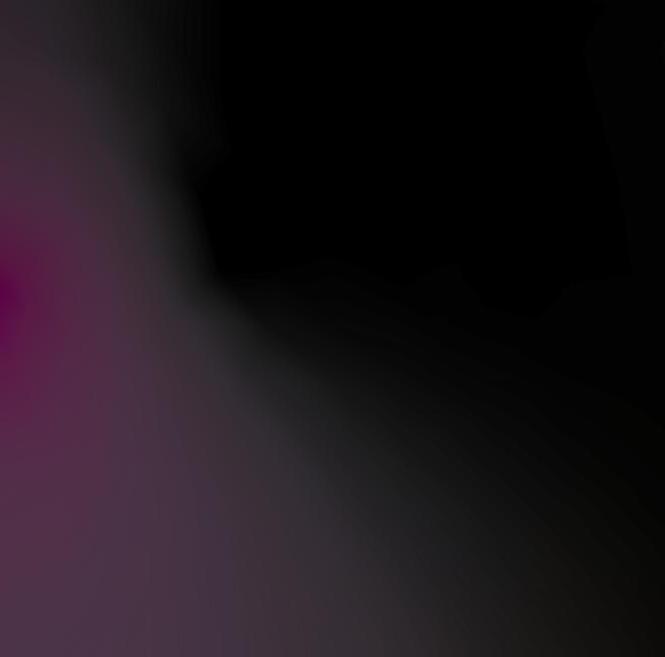
The gravel shu es beneath your feet. You inch within reach of the edge, letting the adrenaline build into a lump in your throat. From this angle, the earth seems to stretch into an unending, bottomless abyss. You try to map out the possibilities and predict the outcomes, but to no avail. You spring into full launch, taking a leap of faith.
Your body tenses, you clench your hands into fists, and brace yourself for the impact before it even comes. In the first few moments, everything happens extremely fast. The trees flick past in a blur. The wind whips against your face. Plummeting, plunging. But then the air shifts and you feel…free. You remember that acceleration is constant during freefall so you close your eyes and let the wind carry you into the unknown. Everything feels uncertain, but you know that the water awaits below, ready to catch you.
Spring (verb): to move forward quickly
Every year on a random Sunday in March, we spring forward. Despite the promise of brighter, longer days, this change is always disorienting. Theoretically, losing an hour should be the same as lying awake an extra hour scrolling on TikTok at night, right? Yet somehow, daylight savings feels more disruptive. The sun comes out, but my mind is clouded. As the sky seems to stretch higher, my eyes droop lower.
The feeling is temporary. Soon, I adjust, as does everything around me. Campus comes alive again. In the morning, I spend hours on the Main Green, followed by afternoon walks,


evenings at Barrington, and night walks. A di erent routine takes form as the quiet, cozy winter days recede behind the horizon.
Not all countries observe daylight savings—particularly, regions that are closer to the equator. Some U.S. territories like Puerto Rico, Guam, and Hawaii stopped changing the clock in the mid-90s. The topic seems to be a recurring point of discussion. Year after year, I hear rumors that “this is the last time,” but isn’t time subjective anyway? Regardless, both options require a reset of some kind. One is an annual, repeated occurrence, the other is a largescale, one-time adjustment. A notable day in Sweden—known as Dagen H, when the whole country switched from driving on the left side of the road to the right—showed that sudden change will inevitably be uncomfortable. But over time, there comes a new normal.
Nonetheless, in November, we will fall back again. Life moves on.
Spring (noun): a metal coil
A spring is a physical representation of the inner workings of potential energy. It stores energy when a force is applied, then releases that energy when the force is removed. Its bouncy and elastic properties allow it to function in various ways. It can absorb shock and lessen the impact of a collision. It can catapult an object farther than it would be able to travel on its own. In any case, it acts as a crutch. It is resilient and patient, expecting the opportunity to be useful. Its function is to serve as a cushion, compressing and stretching, altering its own shape so as to support other objects.
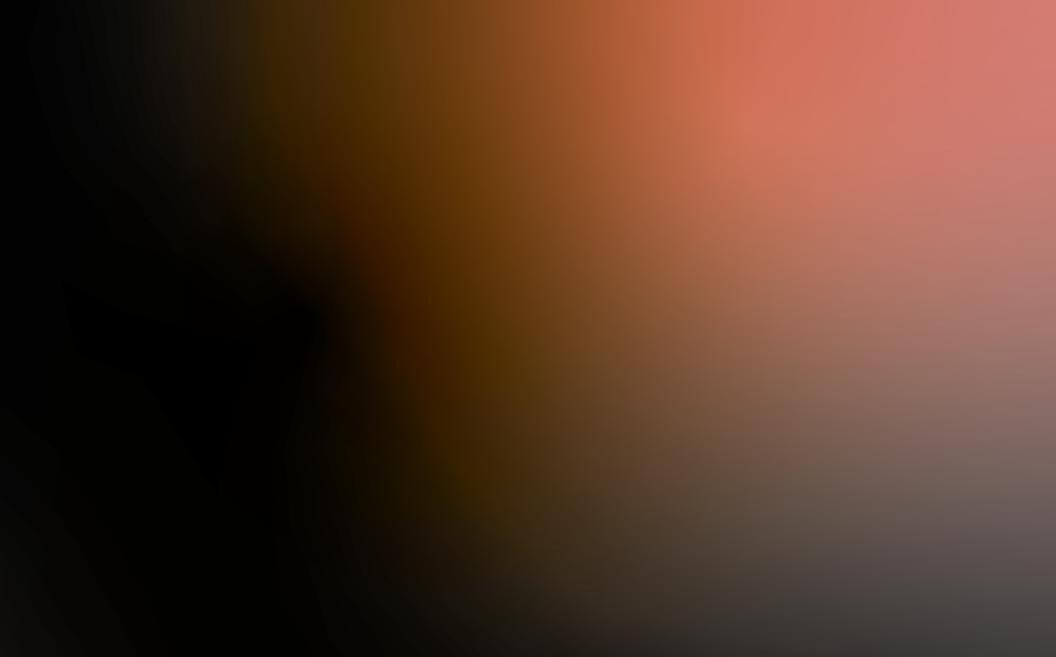
When you spend so much time giving yourself to other people, you may forget to stand strong for yourself. At its resting state, a spring finally returns to its original form. And you learn to balance both.
Spring (verb): to originate from
On my first birthday, I embarked on a 20+ hour trip to China. For the next 18 months, I would live there with my grandparents while my parents were on the other side of the world. The first few years of a child’s life are essential for cognitive and language development, motor skills, and social-emotional learning. Many foundational characteristics and milestones spring from this period.
I don’t remember anything from that time, but my mom’s photo album tells the story. On the first page, there’s a picture of me standing on the ledge next to the windowsill of my grandparents’ house, waving to neighbors and passersby. Through the window, there are distant outlines of gourds and grapes neatly strung along the fence of the garden. On the next page, I’m in my grandpa’s arms posing in front of Tiananmen Square. My left hand is clutching a mini portable fan to combat the summer heat. In my right hand is a Xi Yang Yang figurine from my favorite childhood TV show. In another picture, my cousin and I are playing dress up with mannequins and dolls nearly the same height as us. There is a faded yellow filter over the photo—either an indicator of the living room’s warm light, or signs of the album’s old age and the dust it has collected over the years. Maybe it’s both.
We sold our Beijing house after my grandparents passed away, and I haven’t been back in 10 years. Does Chen Nai Nai have someone to go on post-dinner walks with? Does Zhu Nai Nai still make zong zi for everyone on our street? I hope another little girl is waving by the windowsill.
Spring (noun): the season after winter and before summer
We tend to think of seasons in terms of months and relative time periods. In the Northern Hemisphere, spring roughly spans from the middle of March to the end of May. Scientifically, the start of spring is called the Vernal Equinox. There are only two times in the year when the Northern and Southern Hemispheres receive equal amounts of daylight and darkness at all latitudes: the Vernal Equinox and the Autumn Equinox. On the Vernal Equinox, the Earth’s axis is tilted just so; it is neither facing towards or away from the sun.
The in-between is both calming and unsettling. It’s not quite an ending, but it’s not yet a beginning. I’m about equidistant in age from 14, when I started freshman year of high school, to 30, and that’s terrifying. But we’ll all figure it out together, and that’s reassuring.
It’s a bit past the Vernal Equinox now. The Northern Hemisphere is approaching the sun, but we’re still closer to the Vernal Equinox than we are to the summer solstice. I wish I could stay in the in-between for just a little longer.
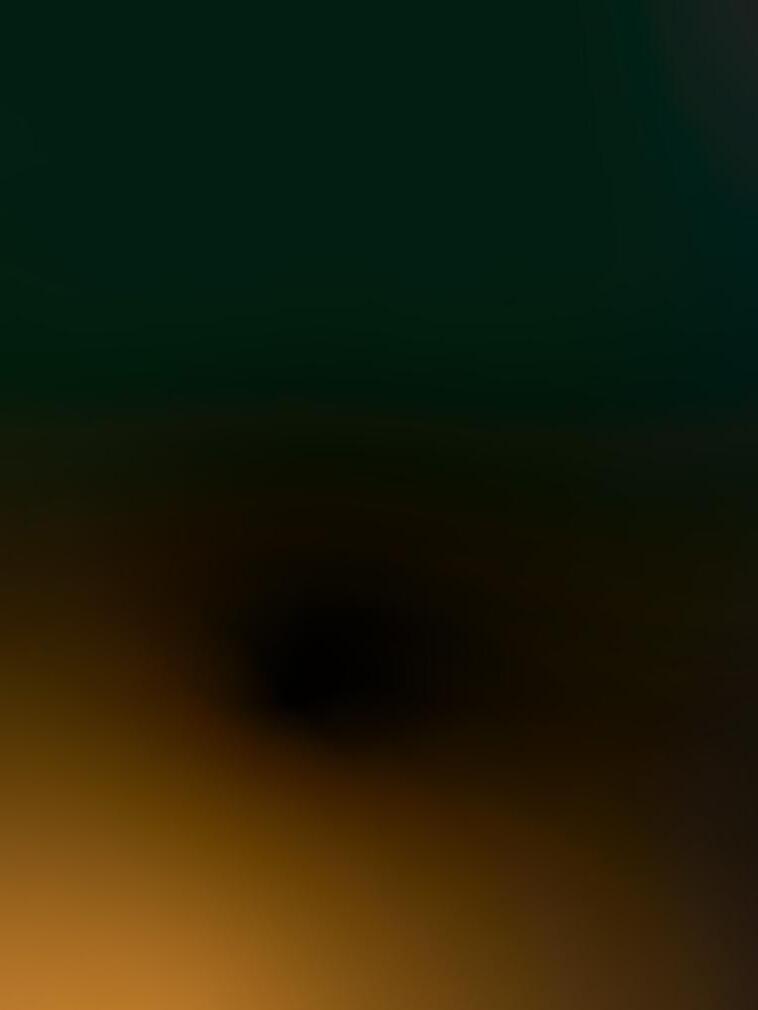
I used to think that the season you called your favorite revealed something profound and immutable about you. As a kid, since I got sunburnt so easily, I found warm, bright weather forbidding. That ruled out summer. Since I hated snow (peers were even harder to turn into friends when they were pelting snowballs at you, and ice impeded an easy getaway to the refuge of the indoors), I disliked winter, too. That left me with autumn and spring. My birthday sat squarely in the former, making it the easy choice between the two.
And so, sometime during high school, I began to conceive of my personality as autumnal. I came alive during October, and the high stayed with me well into December. Exultantly, I wore deep colors, consumed all things pumpkin spice, and collected especially beautiful fallen leaves into a little brown vintage purse. I bemoaned any warm days that lingered from summer, wearing my favorite sweaters long before they were climatically appropriate. I took pleasure in horror movies, ghost stories, dark forests—anything that could be classed as spooky (spoopy, for millennials). I made sure everyone knew that I was a Scorpio. In short, I crafted my entire personality around the stereotypical associations surrounding a mere quarter of the calendar year. If I was basic, I didn’t care. It was easy to take autumn’s personality for my own: Whenever I had to choose between films, or foods, or outfits, or modes of expression, I could just go with whichever had the most palpable fall vibe.
But then what would happen when, against my will, I found myself enjoying the other three seasons? Was I allowed?
As I got older, dreaded recess hours in the dead of New England winter were no longer scheduled into the school day; hence, there were fewer snowball fights to dodge. I could pretend that winter, with its cold weather and people’s acceptance of staying inside during it, was an extension of autumn. I could keep wearing my sweaters and drinking hot drinks.
The warmer seasons, however, were harder to reconcile with my perceived personality. At least during summer, my beloved autumn was not far away. In a matter of months, temperatures would fall, and I would be back to my full form.
Spring, though. Spring was tough. It was bad enough that I was at least six months from my preferred time of
enjoying the outside need not be seasonal
by Daniella Coyle Illustrated by Kaitlyn Stanton
year. But to add insult to injury, I was doomed to a fate of itchy eyes and sneezing in intervals of thirty seconds.
Spring wasn’t for me. It was for other people—people who did not turn beet red as a result of ten minutes spent in the sun, people who had vast groups of friends to sit out on lawns with in public.
Here’s where I may sound a bit bitter. My first couple of years of college, instead of greeting the first days of spring weather with an urge to sit out with, seemingly, the entire school on the Main Green, I felt more anxious than ever. Walking to class, with the dense crowds in the bright sun and the cacophony of yelling and dissonant songs playing from different speakers, unnerved me. I longed for the days of cool and rainy autumn, when my daily walk was just me and the fire-hued trees.
I know. I’m a monster. I realize that the springtime Main Green bustle is a huge and, as many seem to feel, heartwarming part of the Brown experience. And I didn’t fully comprehend why I was like this at first, either. It’s not that I didn’t have amazing friends, or access to sunscreen, or noise-cancelling headphones. But I could not, no matter how many times I tried, enjoy it. I cursed the entire season of spring and all that it stood for.
The first true feeling of spring in 2025 came one day a couple of weeks ago. And instead of cowering in my room with the blinds down and a woody candle lit, trying to pretend that outside a gentle rain was pattering against orange leaves, I decided to challenge myself. In the early morning, I took myself on a walk. The air felt fresh on my skin, the sun gently warming, and, against my will, I had to admit to myself that it was nice, especially after a long string of cold days in layered clothing. The thing about nice weather is that it is indiscriminate. It doesn’t stop being nice just because someone
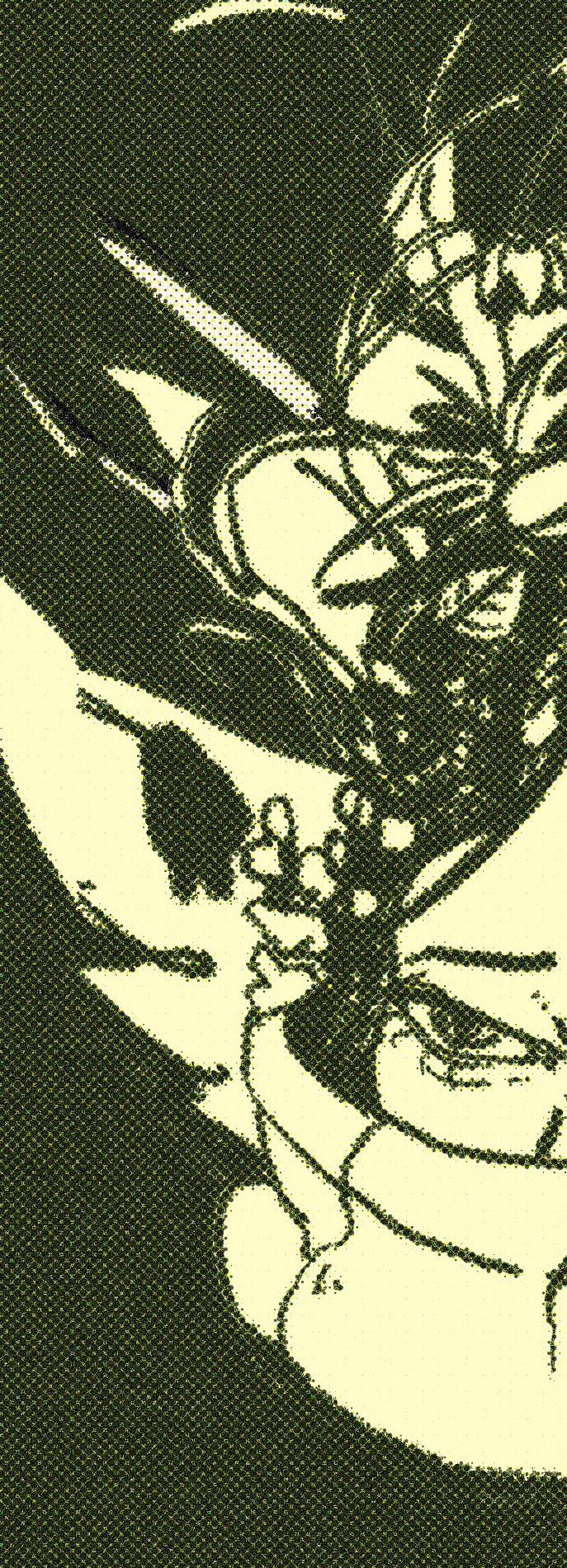
has sworn themselves to a life favoring autumnal gloom.
Later that day, when I had to walk past the Main Green to get to class, I breathed a little easier than on previous years’ first spring day. I had already taken the small step of going for a solo walk, breathing in and enjoying, and in doing so, claiming the spring weather for myself. Even the dense crowd couldn’t make me feel like it was not mine.
Then, I tried going through the motions a little more. I laid under a tree on the Quiet Green later in the day and listened to the birds chirp. I took a picture
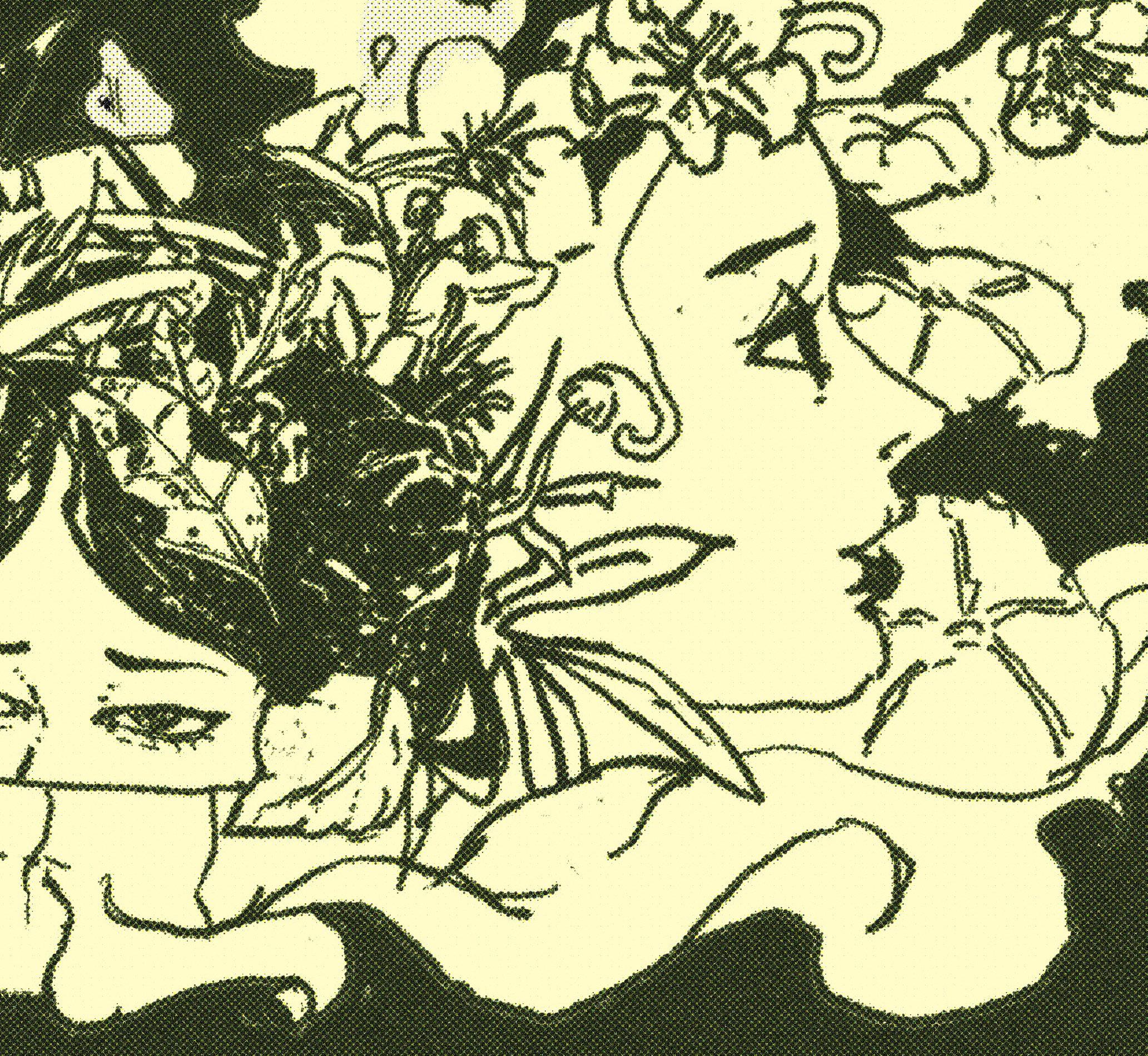
of a patch of blossoming flowers. I sat in my backyard until the sky grew dark and smiled as a rabbit scurried across the grass. I tried, even as the autumn within me protested, to do what normal people did. And again, I had to admit that spring was pretty.
So, I made a list of things to embrace. Daffodils. Using the firepit in my backyard. Outdoor seating at bars. Birdsong. Walks in the woods. Reading. Wearing more skirts. Et cetera. Whether they’re available year round, or only in the spring, they’re experiences I can look forward to this season, even if it’s not—by

my own standards— my season.
As if in resolution to enjoy my spring this year, I bought allergy medication and strong sunscreen. I began to make immediate plans with friends to go hiking, and, more generally, to spend time together.
Maybe part of what’s making the transition to spring easier to digest this year is a broader self-growth, an assurance that comes with age that I can tackle things that are initially hard. Maybe it’s that I’ve found that spring and fall aren’t so different. Both are transitional seasons when my best light jackets are
optional, both feature beautiful scents (even if during spring I risk punctuating my deep inhale with a sneeze), and both feature flora that bloom (or die) in the loveliest of colors. Or maybe it is an understanding that I, like anyone, and at the risk of sounding cliché, contain multitudes. I can resonate with the personality and aesthetic of fall while still enjoying the undeniable bliss, the floral fragrance, of spring. I can look forward to my favorite season while still feeling the sun shine on me even as I’ve scorned it, and the feeling that the world is beginning to bravely bloom once more.
A pril 23, 2025 11
When the air tastes like radiance and the days drip with donut-pink glaze, it’s easy to fall in love with the whimsy and e ervescence of life. It is also tempting to believe you aren’t perhaps fully cooked—maybe only a tad bit caramelised.
These days are far and few between, and Providence spring somewhat subverts the definitions that make the season so scrumptious and splendid. Temperatures peak above freezing point as if hesitant to embrace warmth and brilliance, and the sky shudders until it is enveloped by a blanket of grey. Every so often, the clouds burst into tears and we stare at the mirages of the universe’s transient glory. Occasionally, though, sunshine will seep into life and love, and it feels like a monumental tectonic shift. People congregate on the Main Green, and we look like the multicultural, vivacious, eternally joyous college students that stock photos love.
When I think of spring, I don’t think of cold winds and desolate skies or sunshine so rare it fosters communal celebration. Instead, my mind conjures images of the sun glinting against rose-tinted bangles, spices clinging to sweet, restless air, and yellow champa flowers decorating the trees outside my house.
Delhi spring is oh-so-unserious because exams just ended and it feels like you’re free forever—but it’s also transient in the oxymoronic way that tiny breaks and sweet treats can relieve you of real and monumental weight.
Here, though, my midterms proceed, and the Hindi songs in my playlists make me feel nostalgic for the blossoms that smell like mangos and sunrise and new, imperfect, idyllic dreams. I miss the vivid yellows, sitar symphonies, and how the light falls on my nani’s plants in the balconies. But I know that when I go back, I’ll yearn for the sharp, zingy air and the shy, shivering half-light, and the flowers that bud slowly but surely, infusing my day with more sunshine than the cosmos could ever hope to. The melt of ice into peace-puddles and the way frost-bitten branches transform into gentle caresses that embrace me far from home will make this home, as much as it feels like a betrayal to admit it.
The thing about having multiple homes is that the boundaries start to blur, and you float in an illusory space where you are both present and distant, reminiscent and yet unabashedly alive. You yearn for something that can tether you to the familiar and unfamiliar, old and new, and perhaps you’ll learn to cherish both homes in their unique identity. Perchance, though, like me, you’ll merge the two into an amalgamation that is di erent and distorted and beautiful and somewhat resembles how it feels to be suspended and glittering in various degrees of known.

I may be biased—after all, I am the legacy of marble world-wonders and ankle-bells and Hindu aartis per meating through white walls. I am from a country where spring is the season of intertwining shadows entering dazzling minuets on wooden floors and myna birds flit ting between the Mughal architecture dot ting the pretty parks. In Delhi, spring is vibrant Holi colours, pleasant breezes kissing tremulous trees, and decadent mithai with aromas that hasten to di love, warmth, and home.
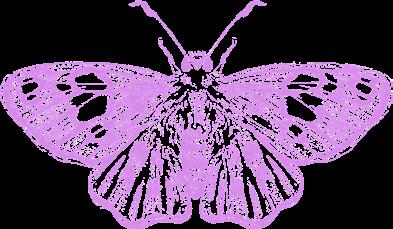
So when white flowers adorn the dainty tree outside Salomon and the windy paths down to RISD become abuzz with the honeycombs of my dreams, I’ll think of bright chilly air, champa flowers outside my window, and dust-choked, winding roads, here and there, that lead to home, wherever I make it.




Four Buds Floral Studio is a full-service orist and boutique featuring quality house plants, greeting cards and gifts.
hello@fourbuds oral.com (401) 351-1775
284 Wickenden St Providence, RI 02903
We’re here to infuse your special days and everydays with nature’s beauty.
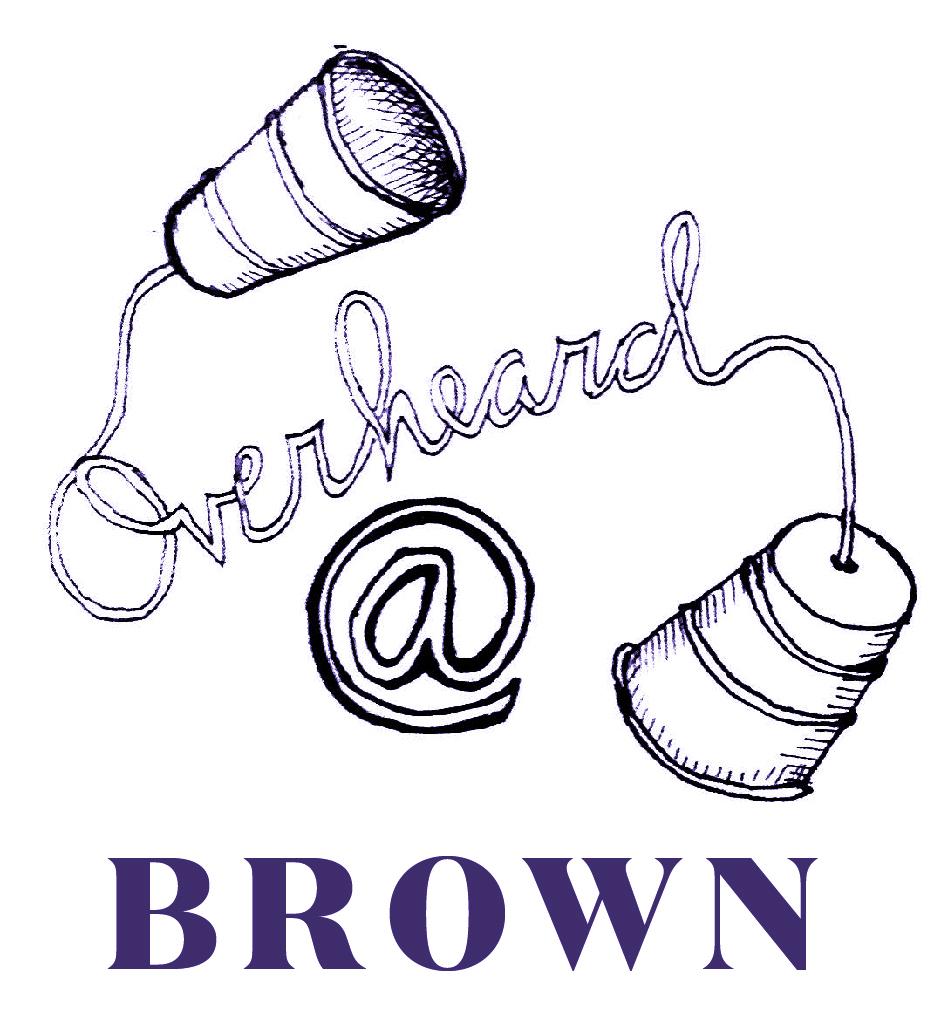
“The song met us at that precise space, resonating with our ephemeral selves in that exact moment. And I’ve found that the best music does just that.”
“Maybe caviar can cure my anxiety.”
“The song met us at that precise space, resonating with our ephemeral selves in that exact moment. And I’ve found that the best music does just that.”
— Katheryne Gonzalez, “Notes on Collisions” 04.18.24
“The end of spring semester came in a rush of magnolia blossoms and final papers and clothes strewn across the carpet as we sorted through our shared treasures. There was a strange, gentle sadness we felt every time we passed the trading post that May, keenly aware of the days whittling down until the spell would be broken.”


— Klara Davidson-Schmich, Tabitha Lynn, & Alissa Simon, “The Sisterhood of the Traveling Pants” 04.18.24


1. Chappell Roan
2. Charli xcx & Troye Sivan
3. Kendrick Lamar (again)
4. Undertow Brass Band
5. JoJo Siwa
6. Cast of Hamilton
7. Coldplay/Chris Martin
8. Cynthia Erivo and Ariana Grande
9. Timothée Chalamet (as Bob Dylan)
10. David Bowie (rip)
EDITOR-IN-CHIEF
Emilie Guan
FEATURE
Managing Editor
Klara Davidson-Schmich
Section Editors
Daphne Cao
Elaina Bayard
ARTS & CULTURE
Managing Editor
Elijah Puente
Section Editors
Lizzy Bazldjoo
AJ Wu
NARRATIVE
Managing Editor
Katheryne Gonzalez
Section Editors
Gabi Yuan
Chelsea Long
LIFESTYLE
Managing Editor
Tabitha Lynn
Section Editors
Daniella Coyle
Hallel Abrams
Gerber
POST-POURRI
Managing Editor
Susanne Kowalska
Section Editor
Olivia Stacey
HEAD ILLUSTRATORS
Junyue Ma
Kaitlyn Stanton
COPY CHIEF
Jessica Lee
Copy Editors
Indigo Mudhbary
Anika Kotapally
Lindsey Nguyen
SOCIAL MEDIA
Managing Editor
Tabitha Grandolfo
Section Editors
Eliot Geer
Chloe Ovbiagele
LAYOUT CHIEF
Gray Martens
Layout Designers
Amber Zhao
Alexa Gay
James Farrington
Irene Park
STAFF WRITERS
Nina Lidar
Gabi Yuan
Lynn Nguyen
Ben
Herdeg
Daphne Cao
Indigo Mudbhary
Ishan Khurana
Sofie Zeruto
Sydney Pearson
Ayoola Fadahunsi
Samira Lakhiani
Ellyse Givens
CROSSWORD
AJ Wu
Ishan Khurana
Lily Coffman
